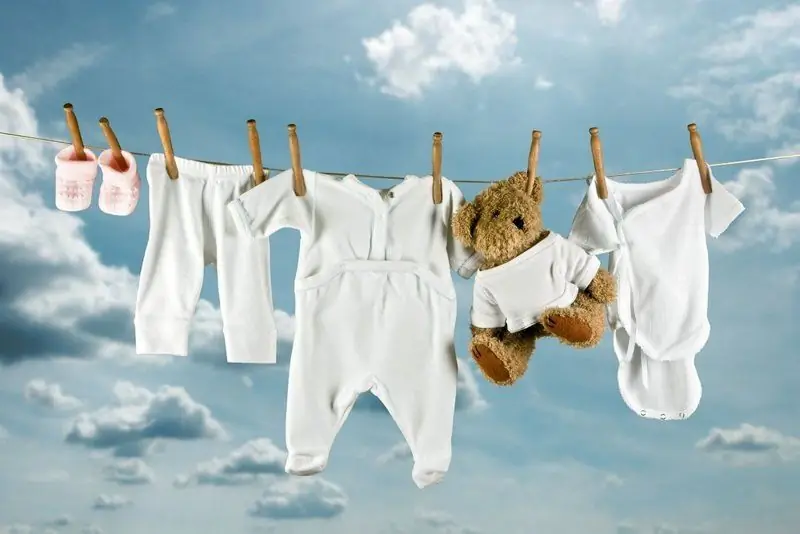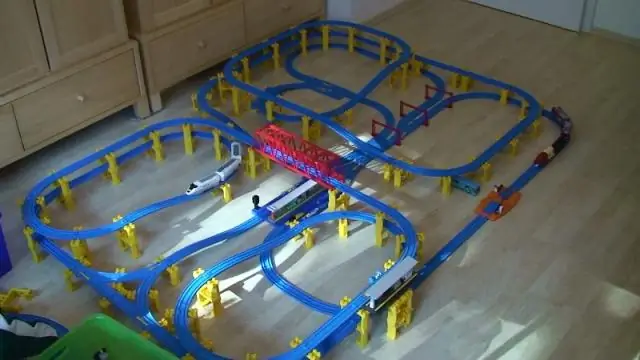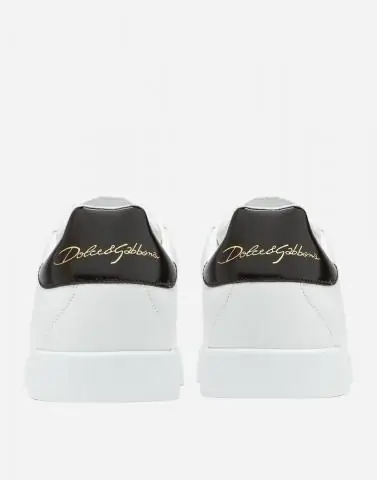
Table of contents:
- Author Bailey Albertson [email protected].
- Public 2024-01-17 22:26.
- Last modified 2025-06-01 07:32.
How and what to wash clothes for a newborn: tips for mothers

Young children require special care and attention. This also applies to washing children's clothes. Let's talk about what nuances you need to take into account, and how to choose safe detergents.
Content
-
1 Basic rules for washing clothes for newborns
1.1 Choosing the optimal detergent for washing
-
2 Popular household chemicals
2.1 Photo gallery: popular detergents for washing children's clothes
- 3 Practical tips for washing baby clothes
- 4 Reviews of experienced mothers
- 5 Video: Dr. Komarovsky about washing children's clothes
Basic rules for washing clothes for newborns
In the first months of a baby's life, his clothes are usually washed daily. A washing machine is a faithful assistant for a young mother, capable of greatly facilitating life, but sometimes manual labor may be required. Let's list the basic rules for washing children's clothes, which must be followed:
- Wash separately from everything. Even soiled baby things need to be stored in a separate basket, and no more than a day. It is especially important to protect things from contact with outerwear, on the surface of which a large number of bacteria live.
- Use special detergents. For washing clothes of a newborn, only specialized products (powders and gels) marked "0+" or "From birth" are suitable, as well as ordinary soap.
- Clothes should be washed before first use. Items brought from the store can be just as dangerous as outerwear. During production, transportation and sale, microorganisms and contaminants accumulated on their surfaces, which now need to be disposed of.
- Wash at a suitable temperature. Many washing machines have a children's wash cycle that heats the water to 80-95 ° C. In terms of effectiveness, such washing is comparable to boiling, but cotton items can become coarse. Then it is recommended to iron them after drying with steam. Clothes made from other materials (fleece, knitted clothes, outerwear) cannot be washed at high temperatures. In these cases, it is worth washing, following the manufacturer's recommendations on the tags of things.
- Do not use additional chemicals. When washing clothes of newborns, do not use chlorine bleach, anti-scale agents in the washing machine. These formulations may not be safe for babies. Air conditioners with fragrances can irritate the sensitive sense of smell of the crumbs, therefore they are also undesirable.
- Rinse thoroughly in water. Even safe baby detergents can provoke allergic reactions if the particles are not completely removed from the fabric fibers. On an automatic washing machine, the children's wash cycle usually already provides for double rinsing of clothes. The "anti-allergenic" mode has a similar washing scheme. If there are no such modes on your washing machine, it is worth turning on the additional rinse function or turning on a separate rinse cycle after the end of the main wash program. For hand washing, rinse things in clean water at least 3-5 times.
Choosing the best detergent for your laundry
Household chemicals are considered the most common irritants for delicate skin. Symptoms of allergies are rashes, redness, dry skin during or after wearing washed items. Perhaps every powder contains surfactants (surfactants) that remove dirt from the fabric. The amount of surfactants in baby powder should be minimal, since when the established norms are exceeded, these components often cause allergies. Excessive content of anionic surfactants (A-surfactants) is especially dangerous. In baby powder, the presence of A-surfactants is permissible no more than 5% and other surfactants - no more than 15%. The following components are considered the most aggressive and at the same time difficult to remove from the fabric when washing and rinsing:
- Surfactants (if the established norms for quantity are exceeded)
- preservatives;
- phosphates and phosphonates;
- flavors;
- optical brighteners.
Manufacturers often loudly declare that there are no phosphates in the powder. However, this is often a marketing ploy. The phosphates in the composition are replaced by phosphonates, which are no less harmful.
It is desirable that the packaging of the powder contains not only information that it is suitable for washing clothes of newborns, but also the marking "Hypoallergenic" and "Dermatologically tested"

Choose a dermatologically tested baby powder that is free of hazardous ingredients
The safest are products based on soap (soap powder Our mother) or soap and mild surfactants (Tobbi Kids, Burti baby) - they are the least likely to provoke allergies, but can be inferior to analogues in washing efficiency. Oxygen brighteners and silver ions are considered to be relatively safe substitutes for optical and chlorine brighteners. Optical brighteners can be designated as optical bleaching agent, oxygen - oxygen. The presence of enzymes in the composition of children's powders is permissible - biologically active substances that remove complex stains. They are not considered hazardous, usually activated at 40-60 ° C, and degraded at higher temperatures.
Soap is considered a traditional detergent for washing children's clothes. It is especially often used to wash away stains or use soap shavings (grated soap) as an alternative to powders. However, in the composition of this folk remedy, intended for adults, there may be components that are unsafe for children's skin - alkaline compounds, dyes, flavors, surfactants. Let's take a closer look at the composition of different types of soap:
- Laundry soap. Traditional household products contain a large amount of alkali in the composition, can provoke irritation of children's skin. It can be used for washing things that are not in contact with the skin.
- Baby soap. Suitable for washing children's clothes. It is usually based on olive, coconut, palm, rapeseed oils, as well as skin softening components - glycerin, lanolin, plant extracts. This soap is not always effective against stains.
- Anti-stain baby soap. These are types of baby soaps with permitted additives to remove difficult stains (enzymes, benzoic and citric acids, and others). This category includes soap Ushasty nanny, Baby soap from Nevskaya cosmetics and other brands. If the baby's skin reacts calmly to things washed with such means, then you can use them.
Popular household chemicals
For washing clothes of newborns, it is worth giving preference to hypoallergenic and environmentally friendly formulations with natural ingredients. There are dozens of washing detergents for baby clothes in stores today. Products intended for clothes of newborns can be used for washing older children and for adult clothes. Some of the most popular brands with reactive ingredients include the following:
- I was born. The composition contains surfactants, but in acceptable values.
- Eared nanny. One of the most popular detergents. The composition contains unwanted components (surfactants, bleaches, phosphates) in limited dosages. The composition provides high washing efficiency, but may cause allergies.
- Stork. It contains natural soap, silver ions, a minimum amount of surfactants, bleaches and enzymes. The product is considered safe for babies, but unwanted reactions are not excluded.
- Tide Children's. Contains surfactants (up to 15%), phosphonates, enzymes, shock absorbers, bleach. It has good practical characteristics, but it can provoke allergic reactions on sensitive children's skin.
Among the funds with natural active ingredients are:
- Tobbi Kids. Powders based on laundry soap and soda. Considered safe for babies. There are varieties according to the ages of the children.
- Burti baby. The product contains soap and oxygen bleaches and is considered safe for newborns. The composition does not contain potentially hazardous chemical components.
- Our mother. The powder is based on shavings from soap with coconut and palm oil. It is considered hypoallergenic due to its natural composition.

Household chemicals, tested for safety in different countries, are marked accordingly
Photo gallery: popular detergents for washing children's clothes
-

Powder Our mom - Powder Our Mom contains soap with coconut and palm oil
-

Burti baby powder - Burti baby powder is made in Germany
-

Tobbi Kids Powder - Tobbi Kids Powder contains baking soda and soap
-

Tide Baby Powder - Tide Children's powder contains chemical components in an acceptable dosage
-

Powder Aistenok - Aistenok powder contains silver ions
-

Powder eared nannies - Powder Ushasty nanny is one of the most popular among Russian mothers
-

Powder I was born - Powder I was born is suitable for washing clothes of newborns, although it contains surfactants
Practical tips for washing baby clothes
Whereas in the past moms had to wash their clothes thoroughly by hand and boil children's clothes, today washing looks much easier. Hand washing today is relevant only in the absence of a washing machine, because it is problematic to wash with hands in hot water (which is required to disinfect things). However, most of the popular powders are universal - they are suitable for both hand and machine wash. Do not wash fresh stains by washing the item only partially; baby clothes should always be completely clean. Particular attention should be paid to rinsing thoroughly.

Lingerie properly washed with hypoallergenic composition does not irritate the baby's skin
The following tips can also help you optimize your baby's laundry:
- stool particles must be removed from the laundry before loading into the machine - for this, you can wash the item by hand;
- stains from food should be washed in cool water, and products with enzymes will help to remove them;
- hot water and products with oxygen bleach in the composition will help to cope with stains from fruit;
- drying under the sun can help lighten stubborn stains and provide additional disinfection of the fabric;
- until the baby's umbilical wound heals, his things must be ironed at least from the inside, in the future ironing is not necessary.
Reviews of experienced mothers
Video: Dr. Komarovsky about washing children's clothes
By observing the rules for washing baby clothes and choosing a safe baby powder, you can prevent irritation of the baby's skin and ensure complete cleaning of the fabric. You may need to try several types of powders in action to find the best option.
Recommended:
How And How To Wash Blood From Clothes And Linen At Home, Ways Of Washing By Hand Or In A Washing Machine + Photos And Videos

How to effectively remove fresh or old blood stains on clothes made from different fabrics? We apply folk advice in practice, using materials at home
How To Wash Sneakers In The Washing Machine And By Hand, Including White, The Nuances Of Washing + Photos And Videos

Sneakers are shoes that are comfortable and easy to wear for a walk, nature and even a date. If they get dirty, it doesn't matter. You can always wash them
How And What To Wash Membrane Clothes, Is It Possible To Use A Washing Machine, What Powder Is Needed And Other Nuances Of Cleaning

Features of membrane fabric, how to properly wash clothes from it, cleaning products, as well as tips with a video on the care of high-tech material
How To Wash Sneakers In A Washing Machine (including An Automatic Machine) Correctly, And Then Dry Your Shoes

Tips for washing sneakers in a washing machine step by step. Nuances, features, use of special products, drying rules
Do-it-yourself Fabric Softener For Washing Machine And Hand Washing, Including Based On Vinegar, Soda, Borax And Other Means, Reviews

Benefits of a homemade laundry detergent. Popular recipes for conditioners. What can replace fabric softener. Reviews of home air conditioners
